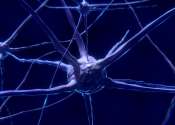The adult brain has the potential to partially recover from inherited blindness, study finds
A discovery about how some visually impaired adults could start to see offers a new vision of the brain's possibilities. The finding that the adult brain has the potential to partially recover from inherited blindness comes ...
Oct 6, 2022
0
245









